Best Metal Detecting Finds in North America
Published by Mark Tymensky on 06/22/18
Detectorists are always looking for the best metal detecting finds. Just the possibility of finding something valuable makes the thrill of the hunt exciting. And there are amazing finds from time to time – precious antiquities and treasures that are revealed from beneath the ground with the use of some of the best metal detectors.
Technology and innovations in metal detector technology have made it possible for amateur hunters to find remarkable and noteworthy items, grasping newfound wealth and inspiring other detectorists to keep swinging.
While the amazing metal detecting finds you hear about often occur in Europe, American detectorists have also found some astonishing treasures. The following are some of the most exciting and valuable.
Spanish Doubloons
Detectorist Edward Rowe Snow visited an island near the shore of Nova Scotia in 1952. Here, he excavated eight Spanish doubloons from the 18th century.
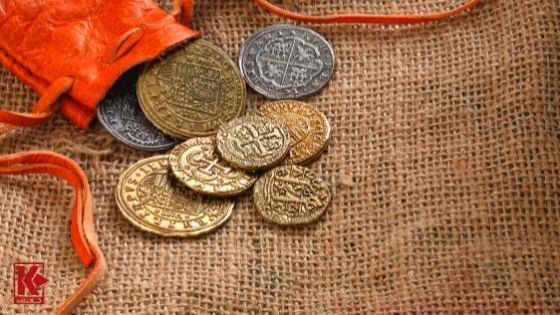
Spanish Doubloons
The treasure was found along with a skeleton, whose hand was still holding some of the doubloons. The doubloons may have come from a Spanish galleon that was seized in 1725 by pirates.
Gold Chalice
In 2008, Mike DeMar was hunting in the waters of Key West when he uncovered what turned out to be a gold chalice. Upon researching the item, it was discovered that the chalice was 385 years old and was from the Spanish ship the Santa Margarita. The ship was full of treasure when it wrecked in 1622. The chalice netted Mike a $1 million reward.
Collection of Civil War Relics
Anywhere that battles were fought is a prime hunting ground for detectorists to find Civil War relics. One such area is Clarke County, Virginia. Lucas Hall, a 7-year-old who had asked for a metal detector for his birthday, began hunting that area. It turned out to be a productive endeavor. After just a few hunting trips in the area, Lucas excavated an 1840/1860 Cavalry sword from the Civil War. Further hunting unearthed other Civil War relics, though none were as valuable as the sword.
The Boot of Cortez
In 1989, in Sonora, Mexico, a detectorist was hunting along the outskirts of the desert when he discovered a true treasure trove. He was using an inexpensive metal detector and had been at it for a number of days before he made his discovery.
The first valuable target he excavated was a gold nugget that weighed in at 389 troy ounces. The gold nugget was given the name “Boot of Cortez” because of its massive size – there had never been a larger gold nugget found in the Americas previously. The nugget was sold for over $1.5 million at an auction.
Stolen Currency from the Post Office
Postal Inspectors were on the hunt for money that a former postal employee had stolen years earlier. It was after the employee died that they decided to enlist the help of a detectorist from the U.S. Army to search the deceased employee’s home. To their surprise, the detectorist located the stolen cash, a total of $153,150, in the employee’s courtyard. He had hidden the cash in cans, urns, and a length of stovepipe. The treasure was buried nine feet underground.
1913 Ford Model T Car
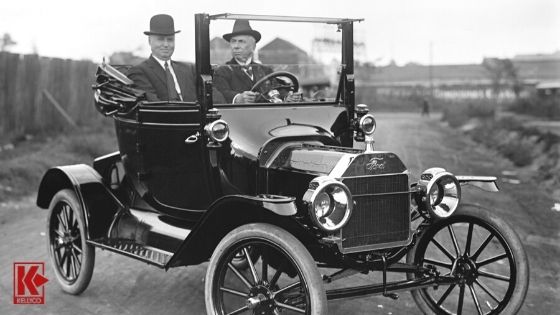
1913 Ford Model T
Yes, you read that right. A couple of Detroit detectorists were swinging their detectors when they located a complete 1913 Model T car that had been buried by the owner in 1926. It seems that the car’s owner had buried the entire car in his backyard for posterity, and then he apparently forgot about it.
A Ring on a Finger Bone
A volunteer archaeologist was searching Little Bighorn, the area where the Sioux had defeated the troops of Lt. Col. George Custer in 1976 when he came across something interesting. It was a ring, still around the bone of the person who wore it.
Rio Rancho Meteorite
Detectorist Jason Lyons, age 13, found a 2-pound piece of space rock in New Mexico. The meteorite was detected with an inexpensive detector that Jason’s grandfather had built for him. When he took the meteorite to the experts at the New Mexico Institute of Meteoritic, it was found to be a rare rock that is estimated to have been in existence on Earth for more than 10,000 years.
Bottom Line on Amazing Metal Detecting Finds
As you can see from the above, there is a treasure to be found with a metal detector. Yes, there are times that a series of unsuccessful hunting trips can become discouraging, but you really never know what will be in the next hole you dig. That’s the exciting part about using a metal detector – the possibility of having the next amazing find!
Tips on Locating the Owner of Jewelry When Finding Cool Metal Detecting Finds
Finding jewelry is a goal of many people who use a metal detector. It’s a bit of a rush when you realize you have found something while out and jewelry is not an exception. After the rush fades you may be wondering what you should do with the find, especially jewelry since it can be hard to locate the owner. If you want to attempt it we have put together some tips on what you can do.
School/Organization
Many times you can look at a ring and tell if it is a class or organization ring. These will be quite a bit easier to return to an owner since there are unique identifiers on them. A little bit of online searching and some time on the phone can be all that you need.
Online Forums
If you found unique jewelry you may have more luck on an online forum. These are communities of like-minded treasure hunters who have similar interests. They could help you identify who made the jewelry and point you in the direction of the company. Some are even just for lost and found type listings. This way can take some time since you have to wait for the right person to come to the forum and read your post.
Social Media

Social Media
Similar to Online Forums, Facebook can help you by getting the information out quickly to a network of people. Look for groups that are based in the area that the piece was found or, if you were able to figure it out, it originated from.
Retailer
If you were successful in identifying a retailer’s or artisan’s marking you could contact them. Some of them keep track of the customers who purchased specific pieces.
Local Law Enforcement
One final thing you can try is to take it to local law enforcement. The person could have filed a report in an attempt to recover their jewelry, especially expensive pieces. In some areas, you turn it in and the police will put out a public notice. After a period of time, if the owner has not come forward you may be entitled to take the jewelry and do with it as you please. Just make sure you call so you know what to expect before taking it in.
Sometimes no matter what you do the owner will not be found. If you use some of these tips, you can at least feel good knowing you tried your best.
Other times you get to make someone’s day like this story about a detectorist that was able to give someone a class ring that was thought to be lost forever.
Our Treasure Finds section has many stories of treasure hunters returning jewelry, and other finds, to owners as well.
- Ring Recovery Metal Detecting Find
- Tot Lot Treasure Find
- Metal Detecting Double Recovery
- Finding and Returning a Class Ring
- Old Detector Finds a New Class Ring
- Reuniting platinum diamond ring with the owner
Cleaning and Care for Great Metal Detector Finds
Finding and digging up relics while you are out with a metal detector is cause for excitement. You could be holding a piece of history in your hand. You also could be holding a bunch of dirt and muck in your hand.
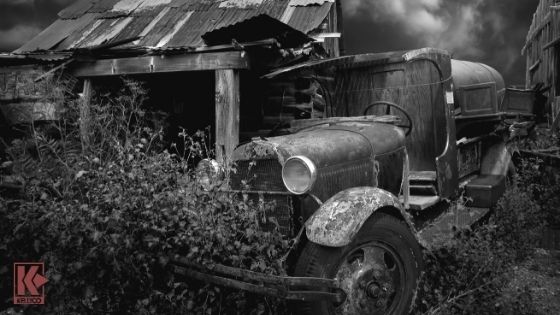
Care for Relics
After being buried for who knows how long, the relics you find are likely to be covered with dirt or tarnish. It’s understandable that you would like to clean them up and make them presentable, but how do you clean and preserve your treasured finds safely? Very carefully. Some finds, especially old and rare coins, can greatly decrease in value if they are scratched or otherwise marked during cleaning, so special care must be taken.
Coins aside, here are some ways that you can clean and preserve the relics you find based on the type of metal:
Gold Coins and Gold Nuggets
For the most part, gold items don’t need much cleaning even after being underground. Usually soaking them in warm soapy water does the trick. If there is some remaining dirt, a soft toothbrush can be used to remove it.
Silver Coins
With silver relics, start off cleaning them the same way as you do with gold – warm soapy water and a soft toothbrush. If that isn’t enough, you can try the washing soda method. Add an ounce of washing soda and a pint of distilled water to an aluminum pan. Place two pieces of crumpled aluminum foil in the pan, and soak the silver items until the tarnish is gone. Only use this method for relics, not coins.
Pewter, Lead, and Tin
Oxidation causes pewter, lead, and tin to tarnish. This patina is best removed with very fine abrasives like a jeweler’s rouge or rottenstone. If that doesn’t work, it’s best to take your relics to a professional for cleaning as you don’t want to damage them.
Copper and Brass
Relics made of copper or brass need special care, but there are several methods that detectorists use to clean them up. One of the most widely used is a mixture of equal parts denatured alcohol and distilled water, combined with precipitated chalk to a paste consistency. Apply it to the relic, let it sit, then rinse off. You may have to repeat it a few times. Another method is to use half a lemon and salt – rub the surface gently and rinse.
Iron and Steel
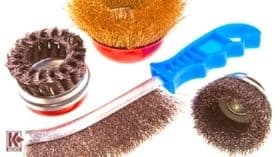
Use A Wire Brush
Iron and steel relics are some of the most commonly found while treasure hunting. Because these types of metals are prone to rust, the first step is to remove as much of the rust as possible. Depending on the potential value of the relic, you can do this with a wire brush, wire wheel, or fine bronze wool. Once the relic is as rust-free as possible, it needs to be sealed with lacquer, a wax coating, or clear plastic spray to keep it from rusting again. If your relic is valuable, consider letting a professional do the clean-up.
What if You Don’t Know?
If you don’t know what the relic is that you have found or what type of metal it is made of, err on the side of caution and don’t clean it until you know. Online treasure hunting forums are great places to get help with relic identification. Other detectorists are happy to help you figure out what you have and how to clean and preserve it.
Tips for Identifying Unknown Things Found With Metal Detectors
There will come a time if there hasn’t already when you find something while you are metal detecting and you have no idea what it is. Perhaps it looks old and rare, really interesting, and possibly valuable – but it’s something that you have never seen before. While it may be a find that you decide to keep in your collection, it would be nice to know what it is. So, how exactly do you go about identifying it? The following are some tips you can use to figure out just what you have dug up.
Clean and Photograph the Item
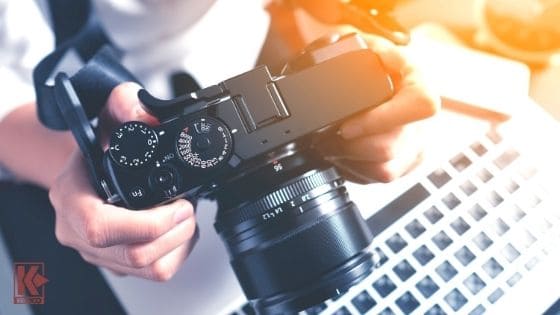
Photograph The Item
Do your best to clean the item you found, removing any dirt or rust. This will help you to see identifying marks and details. Next, photograph the item from several different angles so that you can show it to others who may be able to help with identification. Always be sure to place something next to the item for scale.
Use the Internet
Using any information you have deduced, or clues to what your item is, come up with some search terms about your item and see if you can find anything on Google Image Search and eBay. Some examples are:
- 18th-century brass
- 19th-century silver
- Old decorative silver knob
- Antique brass bookend
The point is to search for possibilities of what it might be, even if you’re not sure. Oftentimes, you can narrow down what the item is on Google, and then go to eBay to find more specific information and possible values.
Books
There are plenty of books on artifacts for different eras or the type of find you are looking for available. You can typically match up finds pretty easily, especially coins.
Metal Detecting Clubs and Online Forums
Other treasure hunters are a wealth of knowledge. People usually have a specific kind of treasure that they look for and may be able to identify it for you, or at least point you in the right direction of where you might find more answers.
Experts
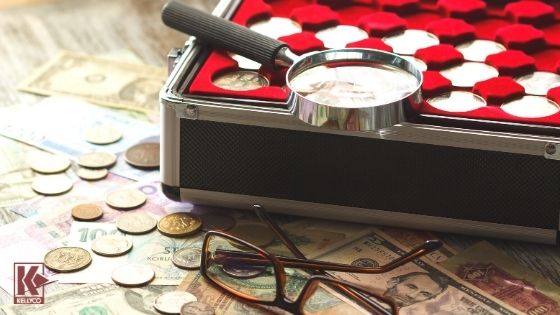
Ask The Experts
If your searches don’t result in anything definitive, it’s time to ask the experts. You can do this in person at antique stores, coin dealers, local historians, jewelers, etc.; or online by emailing or posting your photos to metal detecting clubs and forums. It’s likely that you will find some sort of answer, and by getting your photos online, you may be helping someone else identify one of their finds too.
People who enjoy searching for and cataloging history so much that they have devoted many years towards the pursuit may be able to easily identify the era, material, or use just by looking at it. Sometimes they work for a museum, preservation society, the government, or even a restoration service. Other times they are collectors and enthusiasts that like to help out others.
No matter where you begin your search, it is a good idea to note the area where you found your treasure. Some places are known to have been used as a military camp or are sites of long-demolished buildings that could provide helpful hints to identify your best metal detecting finds.
